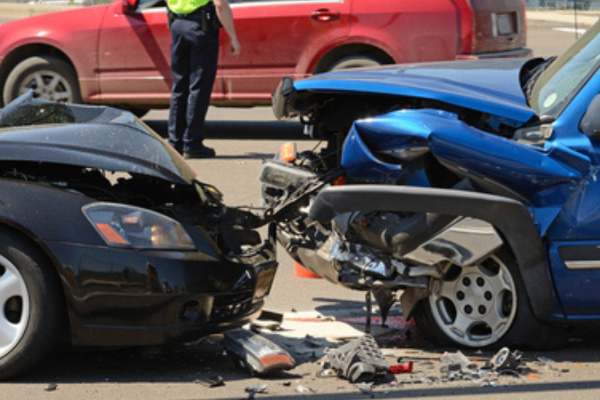
Injuries Commonly Associated with Head-On Crashes
Head-on collisions are among the most dangerous types of accidents, often resulting in severe or fatal injuries. When two vehicles traveling in opposite directions collide, the force of impact can be devastating, even at moderate speeds. Victims often suffer life-altering injuries that require extensive medical treatment, rehabilitation, and long-term care.
The injuries sustained in head-on crashes vary depending on the speed of impact, vehicle size, and use of safety features such as seat belts and airbags. Many victims face long recovery periods, financial hardships, and permanent disabilities. Those affected may need legal guidance from a San Antonio head-on collision lawyer to seek compensation for medical expenses, lost wages, and other damages.
Traumatic Brain Injuries (TBI) and Concussions
Head-on collisions produce extreme force, increasing the risk of head trauma. Victims often endure concussions, skull fractures, or traumatic brain injuries (TBI) from sudden impacts with the steering wheel, dashboard, or windshield. Even with airbags deployed, the violent motion can cause the brain to strike the interior of the skull, leading to significant neurological damage.
TBI may result in cognitive impairment, memory loss, dizziness, and chronic headaches. Some cases are severe enough to cause long-term disability, personality changes, or difficulties in performing everyday tasks. The impact of such injuries extends beyond the physical, affecting both the victim and their loved ones.
Proper diagnosis and rehabilitation play vital roles in recovery. However, medical treatments for brain injuries often come with high costs and require ongoing care. Addressing these challenges is essential for helping victims regain their quality of life.
Spinal Cord and Back Injuries
The immense force of a head-on collision can cause serious spinal cord damage, leading to partial or complete paralysis. Vertebrae fractures, herniated discs, and nerve damage are also common, resulting in chronic pain and mobility issues. Some victims require surgery, physical therapy, or lifelong medical care due to spinal trauma.
Back injuries may not be immediately apparent after a crash, but symptoms such as stiffness, numbness, or sharp pain can develop over time. Left untreated, spinal injuries can worsen, leading to permanent complications. Seeking immediate medical evaluation after a head-on crash is essential to identifying and addressing spinal damage early.
Broken Bones and Fractures
A head-on collision exerts tremendous force, capable of crushing bones upon impact. This often leads to fractures in critical areas such as the arms, legs, ribs, and pelvis. Victims frequently brace for impact with their hands extended, resulting in injuries like broken wrists or fingers.
Ribs and collarbones face particular vulnerability, especially when seat belts restrain the body forcefully in the aftermath of a crash. The combination of impact and restraint can cause significant damage to these areas, compounding the injuries sustained during the collision.
Fractures may necessitate surgeries, metal implants, or extensive rehabilitation for proper healing. In severe situations, individuals may encounter long-term mobility challenges or even permanent disability. Recovery times for broken bones can vary widely; complications like infections or improper healing often extend the recovery process.
Chest and Internal Organ Damage
Seat belts and airbags help prevent fatal injuries, but the impact of a head-on crash can still cause significant chest trauma. Broken ribs collapsed lungs, and heart contusions are common due to forceful impact against the steering wheel or dashboard. In some cases, victims suffer internal bleeding, which can be life-threatening if not treated promptly.
Damage to vital organs, including the liver, kidneys, and spleen, can go unnoticed immediately after a crash. Internal injuries may not present symptoms right away but can lead to serious complications if left undiagnosed. Emergency medical attention is crucial to detecting and treating internal trauma early.
Whiplash and Soft Tissue Injuries
The sudden deceleration during a head-on collision often results in whiplash, a neck injury caused by rapid back-and-forth movement. Whiplash can lead to muscle strain, nerve damage, and chronic neck pain. While some cases resolve with rest and therapy, severe whiplash can result in long-term discomfort and limited range of motion.
Soft tissue injuries, such as sprains and torn ligaments, can also develop after a crash. These injuries may not be as visible as broken bones, but they can cause significant pain and require extensive physical therapy. Failing to address soft tissue damage early can lead to ongoing stiffness and discomfort.
Facial and Dental Injuries
Head-on collisions often result in facial trauma due to impact with the steering wheel, airbag, or shattered glass. Fractured cheekbones, broken noses, and severe lacerations are common. Flying debris from broken windshields can also cause deep cuts and scarring, requiring reconstructive surgery.
Dental injuries, including broken or knocked-out teeth, are another consequence of forceful impact. These injuries can lead to extensive dental procedures, such as implants or reconstructive work. Facial and dental trauma not only cause physical pain but can also result in emotional distress and long-term self-consciousness.
Psychological Trauma and Emotional Distress
Head-on collisions leave lasting effects that extend beyond physical injuries, often leading to significant psychological trauma. Many victims struggle with mental and emotional challenges that can disrupt their daily lives.
- Anxiety and Depression – Victims frequently experience overwhelming fear, sadness, and hopelessness following a traumatic crash.
- Post-Traumatic Stress Disorder (PTSD) – Severe accidents can trigger PTSD, leading to flashbacks, nightmares, and heightened anxiety.
- Fear of Driving – Many survivors develop an intense fear of getting behind the wheel, making it difficult to regain independence.
- Sleep Disturbances – Insomnia, nightmares, and restless sleep are common among those coping with accident-related trauma.
Recovering After a Head-On Collision
The path to recovery after a head-on crash can be long and challenging, with victims facing extensive medical treatments, physical therapy, and financial burdens. Seeking compensation through a legal claim can help cover medical bills, lost wages, and ongoing rehabilitation costs. Legal representation ensures that victims receive fair compensation for both their immediate and long-term needs.
Taking the necessary steps after a crash, including seeking medical attention, documenting injuries, and consulting an attorney, can help protect a victim’s rights. With proper medical care and legal support, individuals injured in head-on collisions can work toward rebuilding their lives after a devastating accident.



